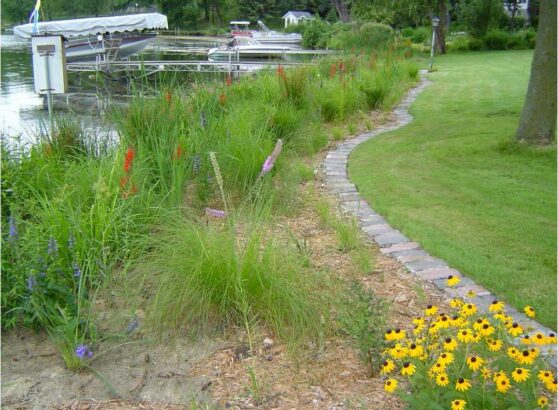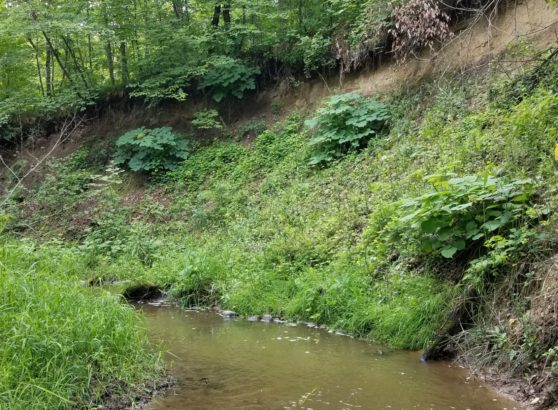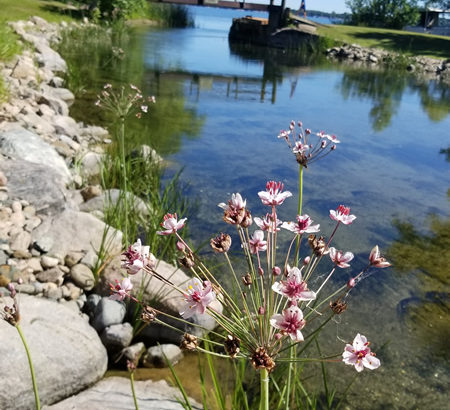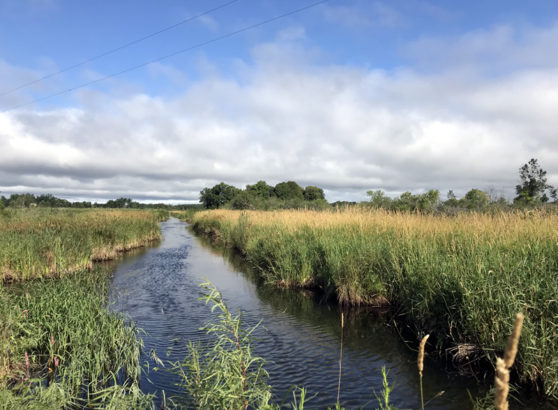The existing Little Floyd Lake dam was constructed in 1936 and acts as a barrier to fish migration upstream into Little Floyd Lake, the headwaters of the Pelican River. The project will modify the existing dam and provide fish passage by installing a rock arch rapids fixture which will improve opportunities for recreation, fish and wildlife habitat and dispersal, as well as provide a permanent fix to the aging fish barrier structure.
Figure 1. Location of project
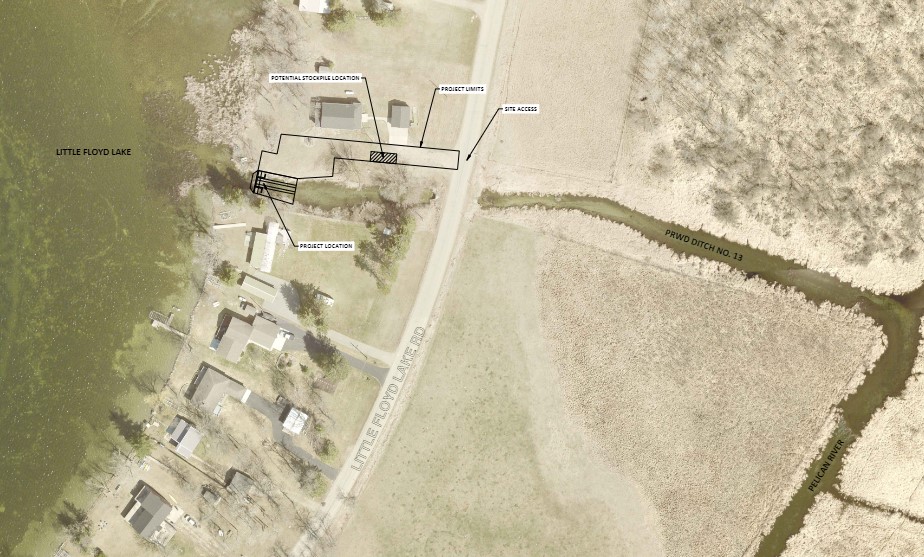
Figure 2 – Project Drawing

What is a rock arch rapid?
A rock arch rapid is a structure that mimics shallow natural rapids in rivers. They are the current state-of-the-art in management of rivers and streams. Rapids allow for a slow and controlled release of flow from a body of water such as a lake, while also allowing for passage of vertebrates and invertebrates.
Rock arch rapids are also safter than dams. Physically, there is no wall structure that can fail leading to downstream flooding. They are also substantially safer for people using the water system for recreation. The quick transaction between lake and river in a dam causes high turbulence in the waterway that can lead to injury and drownings.
If you’d like to learn more about the benefits of rock arch rapids and the plans for dam removal in Minnesota, check out the links below!
Practical Engineering – Drowning Machines: The Dangers of Low Head Dams: https://practical.engineering/blog/2019/3/16/drowning-machine-the-dangers-of-low-head-dams
National Weather Service (NOAA) – Avoid the Drowning Machine: Low Head Dam Public Safety Awareness Month: https://www.weather.gov/ind/LowHeadDamPublicSafetyAwarenessMonth
Minnesota Public Radio – Rock rapids replace aging dams to let Minnestoa rivers flow: https://www.mprnews.org/story/2022/07/05/rock-rapids-replace-aging-dams-to-let-minn-rivers-flow
Project Benefit
This project will benefit the 14,790 acres of lakes and 84 river miles in the entire Pelican River Watershed by restoring connections that existed prior to dam building. To date, 40 barriers to fish migration have been eliminated in the Red River of the North Watershed, and this would be one more important addition. While modification of the dams into rock arch rapids will benefit all aquatic species moving along the channel, this structure will be particularly useful in aiding the MN DNR’s goal of reintroduction of sturgeon throughout the state.
The MN DNR sturgeon reintroduction program has already had significant state investments in funding and resources to improve fish movement and reproduction outcome goals outlined in the MN DNR Red River of the North Fisheries Plan. The MN DNR began stocking sturgeon in Detroit Lake in 1997, and the Little Floyd Lake Rock Arch Rapids would be a key component in creating suitable spawning habitat for sturgeon in the northern portion of the Pelican River Watershed District.
In summary, the main objective of this project is to modify the current Little Floyd Lake dam into a rock arch fishway, thereby providing a long-term fix to the aging dam/fish barrier which will provide multiple benefits:
(a) improve the functionality of the outlet
(b) provide easier dispersal for river species upstream and downstream
(c) provide spawning substrate for sturgeon and other fish species.
Cost-Effective
A complete replacement of the dam would cost much more than retrofitting the existing dam structure. The project will maintain the existing hydraulic function while helping to improve biodiversity and aquatic habitat both upstream and downstream of the proposed rock arch rapids design. The project will improve the connectivity of the rivers and streams in the region and, consequently, will improve fish movement through the Red River basin system. Aquatic species benefiting include all fish and mussel species of the upper Pelican River.
How is this project funded?
The Pelican River Watershed District applied for grant funds to construct this project.
 MN DNR Grant – $ 156,400
MN DNR Grant – $ 156,400

PRWD Local Funds Match – $18,000
Project Total = $174,400
Funding Background
Thirty-three percent of the sales tax revenue from the Clean Water, Land and Legacy amendment is distributed to the Outdoor Heritage Fund. Those funds “may be spent only to restore, protect, and enhance wetlands, prairies, forest and habitat for fish, game, and wildlife.” Land acquired with Outdoor Heritage Funds must be open to public hunting and fishing during the open season in accordance with the state constitution.


Timeline
Installation of the rock arch rapids will be completed during the winter of 2024-2025 in order to work during low flow conditions on the Pelican River.


